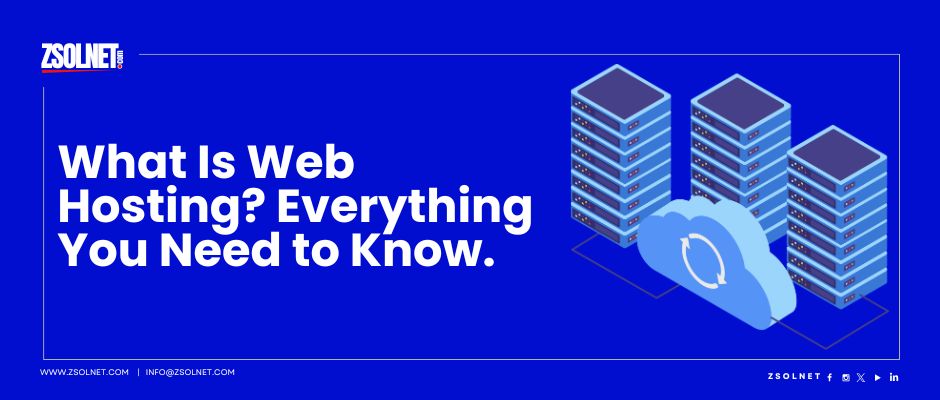Introduction
Managing your domain names effectively is just as important as choosing the right one in the first place. Whether you own a single domain for your personal website or manage dozens of domains for your business, implementing proper domain management practices can save you time, money, and potential headaches down the road.
Domain management encompasses everything from security and renewal settings to DNS configuration and portfolio organization. In this comprehensive guide, we’ll explore the best practices that will help you maintain control over your digital assets and ensure your online presence remains uninterrupted.
As web presence becomes increasingly critical for businesses and individuals alike, understanding how to properly manage your domains has never been more important. Let’s dive into the essential practices that will help you protect and maximize the value of your domain investments.
Secure Your Domain Registrar Account
Implement Strong Authentication
Your domain registrar account is the gateway to your online presence. If compromised, attackers could potentially transfer your domains away, modify your DNS settings, or hold your digital assets for ransom. To prevent this:
- Use a strong, unique password: Create a complex password that you don’t use for any other accounts. Consider using a password manager to generate and store secure passwords.
- Enable two-factor authentication (2FA): Most reputable registrars like zsolnet.com offer 2FA options, which require a second form of verification beyond your password. This typically involves a code sent to your mobile device or generated by an authentication app.
- Utilize security notifications: Set up alerts for any account changes, login attempts, or important account events.
Keep Contact Information Updated
Outdated contact information can lead to missed renewal notices, security alerts, or important policy updates. Best practices include:
- Regularly audit contact details: Review and update your email address, phone number, and mailing address at least once a year.
- Use role-based email addresses: For business domains, consider using addresses like “domains@yourcompany.com” rather than individual employee emails that may become invalid if the employee leaves.
- Set multiple contacts when possible: Many registrars allow you to specify technical, administrative, and billing contacts. Using different contacts ensures important notifications reach the right people.
Never Miss a Renewal
Enable Auto-Renewal
Domain expiration can lead to website downtime, email disruption, and in worst cases, domain loss. To prevent this:
- Turn on auto-renewal for all important domains: This ensures your domains are renewed automatically before they expire.
- Keep payment methods current: Update credit card information well before expiration to avoid declined payments leading to renewal failures.
- Consider multi-year registrations: For core domains, register for multiple years at once (up to 10 years for most TLDs) to reduce annual management overhead and often secure discounted rates.
Set Calendar Reminders
Even with auto-renewal enabled, it’s wise to implement backup reminders:
- Create calendar alerts: Set reminders 30 days, 15 days, and 7 days before expiration.
- Document renewal dates: Maintain a spreadsheet or document listing all domains and their expiration dates for easy reference.
- Implement a renewal verification process: After auto-renewal should have occurred, verify that it was successful rather than assuming it worked.
Optimize Your DNS Management
Understand DNS Basics
DNS (Domain Name System) settings determine how your domain connects to various services:
- A Records: Point your domain to an IP address (your web server)
- CNAME Records: Create aliases that point to other domains
- MX Records: Direct email to the correct mail servers
- TXT Records: Store text information, often used for verification
- NS Records: Specify which nameservers are authoritative for your domain
Best Practices for DNS Configuration
- Use reliable nameservers: Consider using your web host’s nameservers or respected DNS providers like Cloudflare, Amazon Route 53, or similar services for improved reliability and additional features.
- Implement redundancy: Use multiple nameservers from different providers to improve resilience against outages.
- Monitor TTL settings: Time-to-Live (TTL) settings determine how quickly DNS changes propagate. During normal operations, longer TTLs (24+ hours) improve performance, but when planning changes, temporarily reduce TTLs to facilitate faster updates.
- Document your DNS configuration: Keep detailed records of all DNS settings for each domain, including what each record is for and when it was last modified.
Implement Domain Security Measures
Domain Locking
Domain locking (also called transfer lock or registrar lock) prevents unauthorized transfers of your domain to another registrar:
- Enable registrar lock: Activate this feature for all domains you’re not actively planning to transfer.
- Understand emergency procedures: Know how to quickly unlock domains if necessary, including authentication requirements.
DNSSEC Implementation
Domain Name System Security Extensions (DNSSEC) adds cryptographic signatures to DNS records to protect against DNS spoofing and cache poisoning:
- Evaluate DNSSEC benefits: For high-value or security-sensitive domains, DNSSEC provides additional protection.
- Coordinate with your DNS provider: Implementation requires cooperation between your registrar and DNS provider.
- Test thoroughly: Improper DNSSEC implementation can make your domain inaccessible, so testing is critical.
Privacy Protection Services
WHOIS privacy protection (also called domain privacy) shields your personal information from public view:
- Enable privacy protection for personal domains: This prevents your name, address, email, and phone number from being publicly accessible.
- Consider your business requirements: For commercial domains, transparency may be preferred or required in certain jurisdictions.
- Understand limitations: Privacy protection doesn’t hide your information from law enforcement or in legal proceedings.
Organize Your Domain Portfolio
Categorize Domains by Purpose
For organizations managing multiple domains, organization is key:
- Sort by business function: Group domains by their purpose (core brands, products, campaigns, defensive registrations).
- Implement tags or labels: Most registrars allow you to add custom tags to easily filter and sort domains.
- Document domain strategy: Maintain clear documentation explaining why each domain was registered and its current use.
Consolidate Registrars
While there can be advantages to using multiple registrars, consolidation typically offers benefits:
- Simplified management: Access all domains through a single control panel.
- Volume discounts: Many registrars offer price breaks for customers with larger portfolios.
- Consistent security: Apply uniform security practices across all domains.
- Streamlined renewal: Manage all renewal dates and payment methods in one place.
At zsolnet.com, we offer portfolio management tools specifically designed to help businesses efficiently manage multiple domains under a single account.
Monitor Domain Health and Performance
Regular Audits
Conducting periodic domain audits helps maintain optimal performance:
- Check DNS propagation: Verify that your DNS settings are correctly propagated using tools like DNSChecker or WhatsMyDNS.
- Test SSL certificates: Ensure certificates are valid and properly installed, with timely renewal processes in place.
- Verify website accessibility: Test domain resolution from different networks and geographic locations.
- Review domain authority metrics: Monitor SEO health using tools like Moz, Ahrefs, or Semrush.
Set Up Automated Monitoring
Proactive monitoring catches issues before they affect users:
- Implement uptime monitoring: Use services that alert you when your website becomes inaccessible.
- Monitor DNS changes: Set up alerts for any modifications to your DNS settings.
- Track domain reputation: Monitor your domains for blacklisting or reputation issues that could affect email deliverability or website accessibility.
Develop a Domain Strategy
Align Domain Portfolio with Business Goals
Strategic domain management extends beyond technical considerations:
- Regular portfolio review: Assess if current domains align with business strategy and market positioning.
- Acquisition planning: Identify gaps in your portfolio that could benefit from new domain registrations.
- Sunset unused domains: Develop a process for evaluating underperforming domains and making renewal decisions.
Defensive Registration Strategy
Protect your brand by securing related domains:
- Register common TLD variations: For important brands, secure .com, .net, .org and relevant country-specific TLDs.
- Secure common misspellings: Identify and register likely typos of your main domains.
- Consider internationalization: If expanding globally, secure appropriate international domain variations.
Managing Domain Transfers
When to Consider Transferring Domains
There are several situations where transferring domains to a new registrar makes sense:
- Better pricing: More competitive renewal rates or bulk discounts
- Enhanced features: Superior management tools, security options, or support
- Service issues: Dissatisfaction with current registrar’s reliability or support
- Consolidation: Bringing all domains under a single management platform
Transfer Best Practices
When transferring domains between registrars:
- Verify domain eligibility: Most domains cannot be transferred within 60 days of registration or a previous transfer.
- Prepare in advance: Obtain authorization codes (EPP/transfer keys) before initiating transfers.
- Check WHOIS information: Ensure contact information is current and email addresses are accessible.
- Disable privacy services temporarily: Privacy protection sometimes interferes with transfer verification emails.
- Extend registration during transfer: Many registrars add a year to your registration during transfer, making it a good time to extend domain life.
- Transfer one test domain first: If moving multiple domains, start with a less critical one to verify the process works smoothly.
Special Considerations for Different TLDs
Country Code TLDs (ccTLDs)
Managing country-specific domains like .uk, .ae, or .ca requires special attention:
- Understand local requirements: Many ccTLDs have specific eligibility requirements, such as local presence or business registration.
- Be aware of different renewal rules: Some ccTLDs have different renewal periods and procedures than generic TLDs.
- Consider local privacy laws: Data protection regulations may affect WHOIS privacy options for certain ccTLDs.
New gTLDs
Newer domain extensions like .app, .shop, or .tech often have unique considerations:
- Premium renewal rates: Some new gTLDs have higher renewal costs than traditional options.
- Special protection mechanisms: Some new TLDs include built-in features like mandatory HTTPS for .app domains.
- Trademark claims periods: Be aware of special trademark protection periods when these TLDs launch.
Domain Lifecycle Management
Understanding Domain Statuses
Domains go through various statuses during their lifecycle:
- Active: The domain is registered and in good standing
- Expired: The renewal deadline has passed but the domain is still recoverable
- Redemption Period: A grace period after expiration with higher recovery fees
- Pending Delete: The final status before a domain returns to the available pool
- Locked: Various lock statuses that may prevent transfers or modifications
Understanding these statuses helps you manage recovery options if a domain accidentally expires.
Handling Domain Expiration
If a domain does expire:
- Act quickly: Recovery is simpler and less expensive within the first 30 days.
- Understand the fees: Redemption fees are often substantially higher than normal renewal costs.
- Contact your registrar directly: Some recovery options may only be available by contacting customer support rather than through self-service tools.
Practical Examples of Domain Management
Case Study: E-Commerce Business
A medium-sized e-commerce business selling globally might implement these domain management practices:
- Primary domains: yourstore.com (main site), yourstore.co.uk (UK market), yourstore.ae (UAE market)
- Supporting domains: yourstoreshop.com, your-store-name.com (common variations)
- Security measures: Registrar lock, 2FA on registrar account, WHOIS privacy
- DNS setup: Enterprise DNS provider with global CDN integration
- Monitoring: Uptime monitoring, SSL certificate monitoring
- Organization: All domains consolidated at a single registrar with tagging by market
Case Study: Personal Brand
An individual consultant or professional might implement:
- Primary domain: yourname.com
- Supporting domains: yournamecoach.com, yournameconsulting.com (based on services)
- Security: Basic registrar security, auto-renewal enabled
- DNS setup: Simple DNS through hosting provider
- Privacy: WHOIS privacy protection enabled
Domain Management Tools
Registrar-Provided Tools
Most quality domain registrars like zsolnet.com offer built-in management features:
- Bulk management: Update multiple domains simultaneously
- Auto-renewal settings: Control renewal behavior across your portfolio
- DNS management interfaces: User-friendly DNS configuration tools
- Security settings: Centralized security controls
- WHOIS privacy management: Enable or disable privacy services
Third-Party Domain Management Tools
For advanced needs, consider specialized software and services:
- Domain monitoring services: Tools that track domain status, expiration, and DNS changes
- DNS management platforms: Advanced DNS management with additional features
- Domain portfolio software: Specialized tools for large domain portfolios
- API integration: Custom solutions that integrate with registrar APIs
Conclusion
Effective domain management is an ongoing process that requires attention to detail, regular maintenance, and strategic thinking. By implementing the best practices outlined in this guide, you can protect your valuable digital assets, ensure uninterrupted service, and maximize the value of your domain investments.
Remember that domains are more than just web addresses—they’re the foundation of your online identity and often represent significant brand equity. Taking a proactive approach to domain management helps safeguard your online presence and supports your broader digital strategy.
At zsolnet.com, we provide comprehensive domain management tools and expert support to help businesses and individuals implement these best practices. Our team is available to assist with everything from basic domain registrations to complex portfolio management for enterprise clients.
Further Resources
To continue enhancing your domain management knowledge, explore these additional resources:
- Choose the Best Web Hosting with Zsolnet (2025 Guide)
- What Is a Domain Name? A Beginner’s Guide
- ICANN’s Domain Name Registration Data Lookup
For personalized advice on managing your domain portfolio, contact our domain specialists at support@zsolnet.com.




